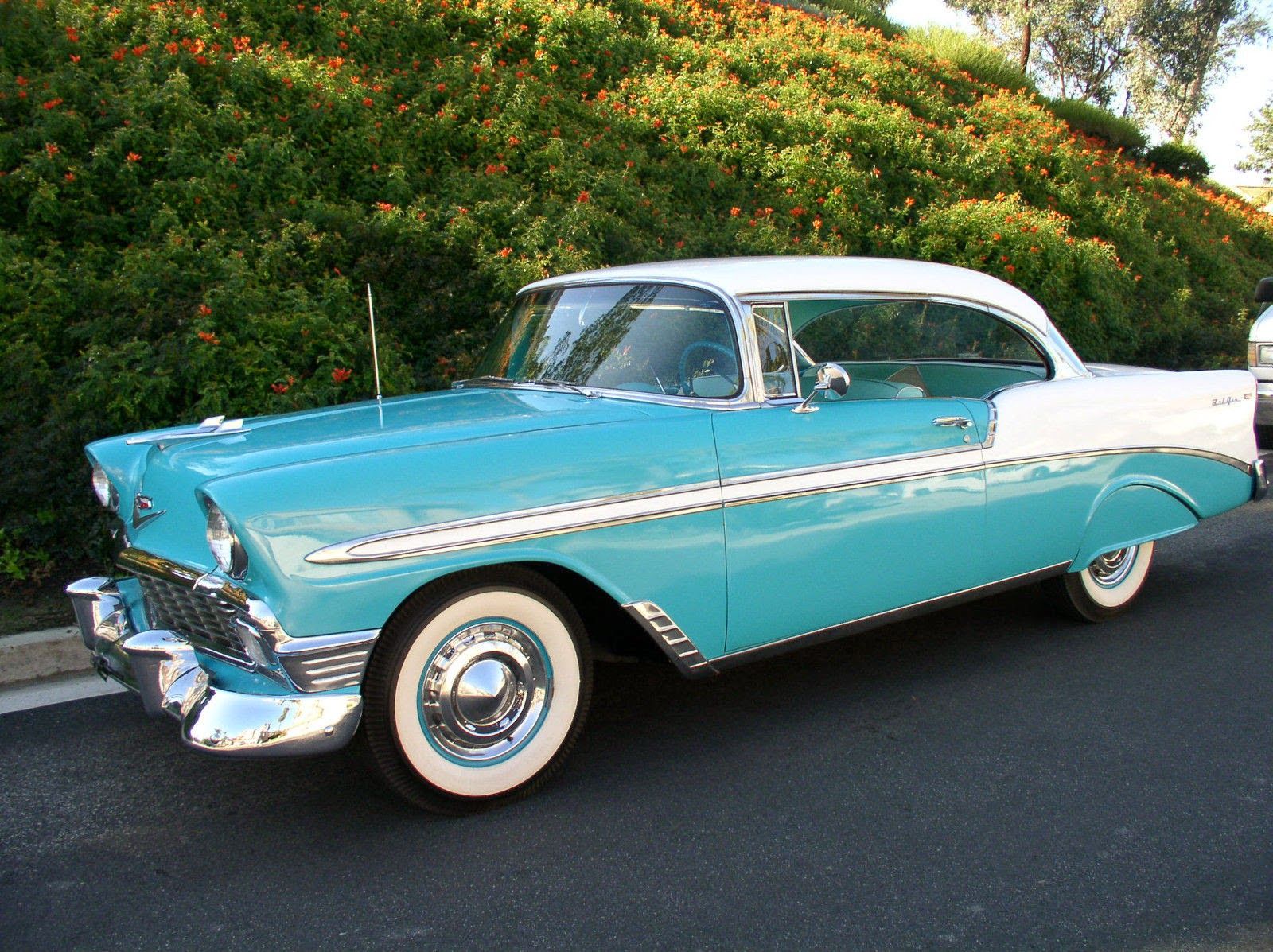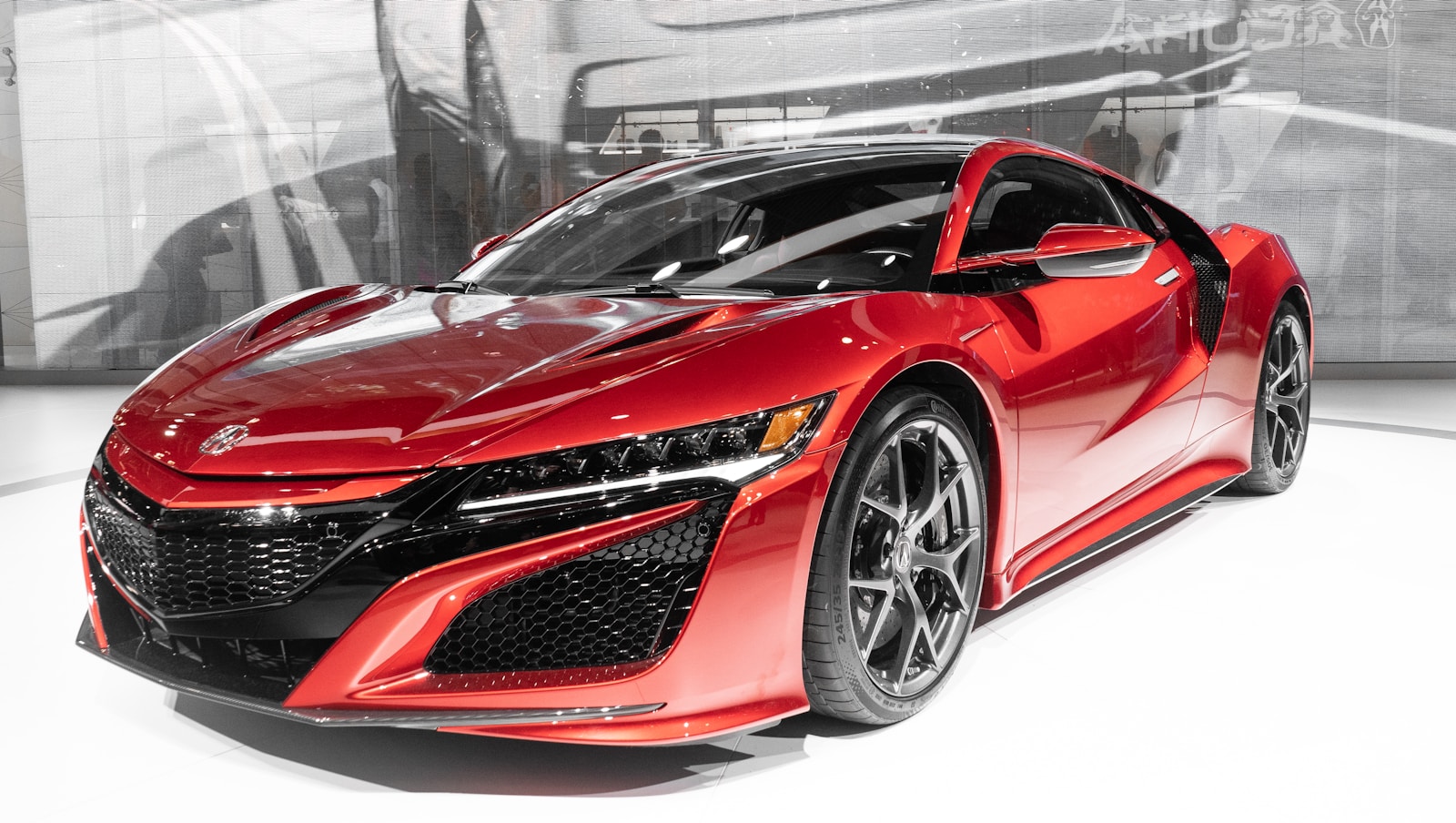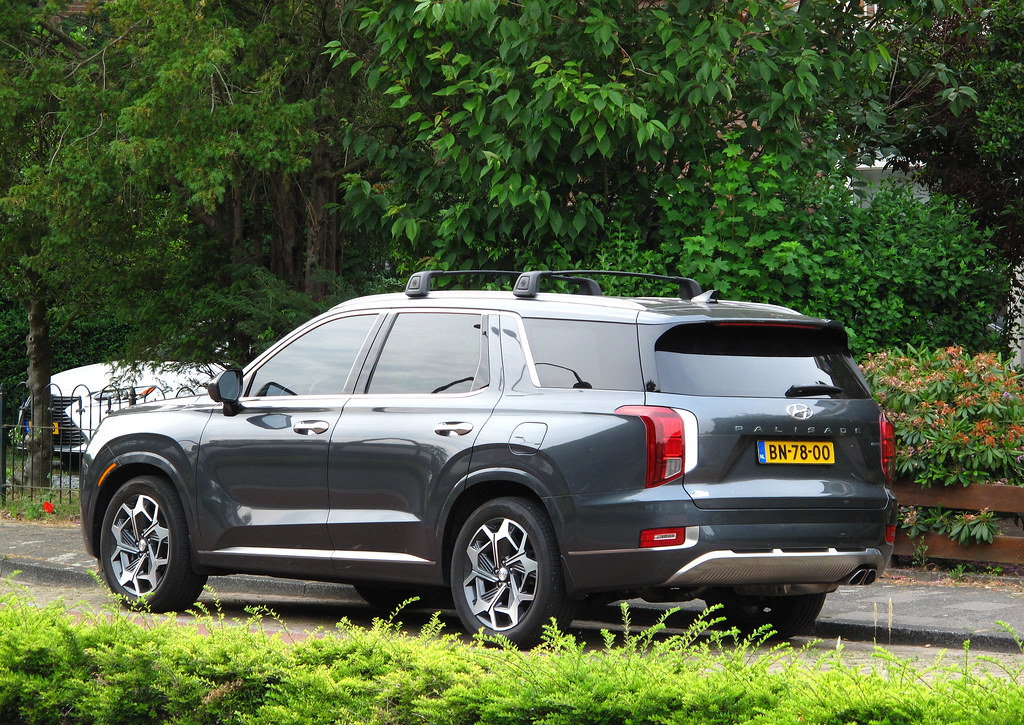
The automotive industry, a realm of innovation and ambition, is no stranger to taking bold risks when launching new models. Yet, not every vehicle that rolls off the assembly line achieves success, or even mediocrity. Indeed, some models are so disastrous that they become cautionary tales, forcing manufacturers to pull them from the market and leaving behind a reputation of poor performance, flawed design, or serious mechanical problems.
These unfortunate chapters in automotive history highlight a critical truth: even the most established brands can stumble. Whether stemming from a poorly executed concept, unreliable engineering, or a fundamental misjudgment of consumer demand, these failures serve as harsh lessons for the entire industry. They remind us that the road to market success is fraught with peril, and a single misstep can lead to significant financial and reputational damage.
From models plagued by significant safety concerns to others suffering from persistent mechanical flaws that render them unreliable, the reasons for a car’s downfall are varied and complex. Sometimes, a vehicle simply fails to attract enough buyers, making its continued production financially unviable. In our deep dive into automotive history, we’ll explore twelve such vehicles—each a vivid example of what happens when ambition collides with execution, resulting in cars so profoundly problematic they were discontinued far sooner than expected.
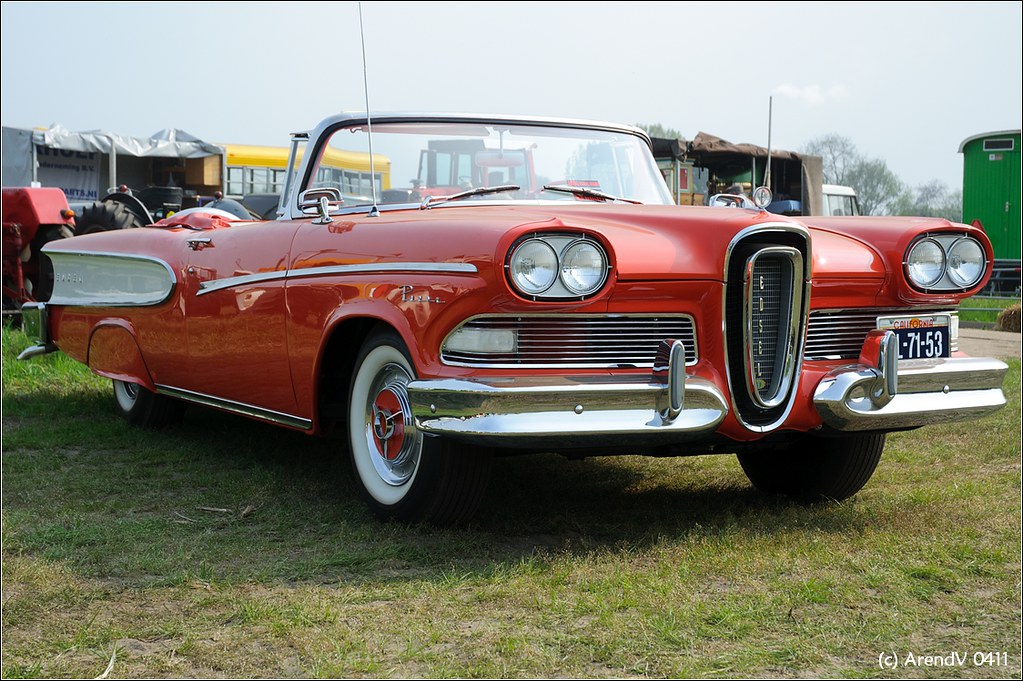
1. **Ford Edsel (1958-1960): The Car That Defined Failure**
The Ford Edsel was heralded as a revolutionary vehicle, poised to redefine the American automotive landscape. Yet, it quickly descended into infamy, becoming one of the most significant and widely recognized failures in car history. Launched in 1958, Ford’s substantial $250 million investment aimed to position the Edsel as the car of the future, a blend of luxury and innovation that would captivate buyers. However, the market’s reception was anything but enthusiastic.
The car’s design, particularly its infamous “horse-collar” grille, proved polarizing and was widely mocked by critics and potential buyers alike. Beyond its controversial aesthetics, the Edsel was plagued by serious reliability issues and egregious quality control shortcomings. Many models reportedly left the factory with a litany of defects, including misaligned parts, faulty wiring, and leaking fluids. Adding to the buyer’s frustration was the introduction of a push-button transmission cleverly located in the steering wheel hub, a feature that, rather than innovating, merely confused and inconvenienced drivers.
Moreover, the Edsel’s launch timing was catastrophically ill-suited to the prevailing economic climate. The late 1950s saw a recession that pushed consumers toward more affordable, practical vehicles, rather than a flashy, overhyped luxury car. With sales collapsing—only 116,000 units sold in three years—Ford was compelled to axe the brand by 1960. The Edsel thus stands as a timeless cautionary tale, epitomizing the profound consequences of marketing gone wrong and a vehicle failing to meet even basic consumer expectations.
Car Model Information: 1959 Edsel Ranger
BirthName: Edsel Bryant Ford
Caption: Ford in 1921
BirthDate: [object Object]
BirthPlace: Detroit, Michigan
DeathDate: [object Object]
DeathPlace: Grosse Pointe Shores, Michigan
Occupation: Automobile executive
Title: Ford Motor Company
Spouse: [object Object]
Parents: Henry Ford,Clara Bryant Ford
Relations: Edsel Ford II
Children: Henry Ford II,Benson Ford,Josephine Ford,William Clay Ford Sr.
Categories: 1893 births, 1943 deaths, 20th-century American businesspeople, All Wikipedia articles written in American English, All articles with dead external links
Summary: Edsel Bryant Ford (November 6, 1893 – May 26, 1943) was an American business executive and philanthropist, who was the only child of pioneering industrialist Henry Ford and his wife, Clara Jane Bryant Ford. He was the president of Ford Motor Company from 1919 until his death in 1943.
He worked closely with his father, as sole heir to the business, but was keen to develop cars more exciting than the Model T (“Tin Lizzie”), in line with his personal tastes. Even as president, he had trouble persuading his father to allow any departure from this formula. Only a change in market conditions enabled him to develop the more fashionable Model A in 1927. Edsel also founded the Mercury division and was responsible for the Lincoln-Zephyr and Lincoln Continental. He introduced important features, such as hydraulic brakes, and greatly strengthened the company’s overseas production.
Ford was a major art benefactor in Detroit and also financed Admiral Richard Byrd’s polar explorations. He died of stomach cancer aged 49. Henry Ford temporarily reassumed the presidency of Ford Motor Company on Edsel’s death, then Edsel’s eldest son, Henry Ford II, succeeded Henry as president of the company in 1945.
He was also a member of the board of directors of American IG, the American subsidiary of the German chemical conglomerate IG Farben.
Get more information about: Edsel Ford
Buying a high-performing used car >>>
Brand: Ford Model: Edsel
Price: $19,000 Mileage: 21,529 mi.
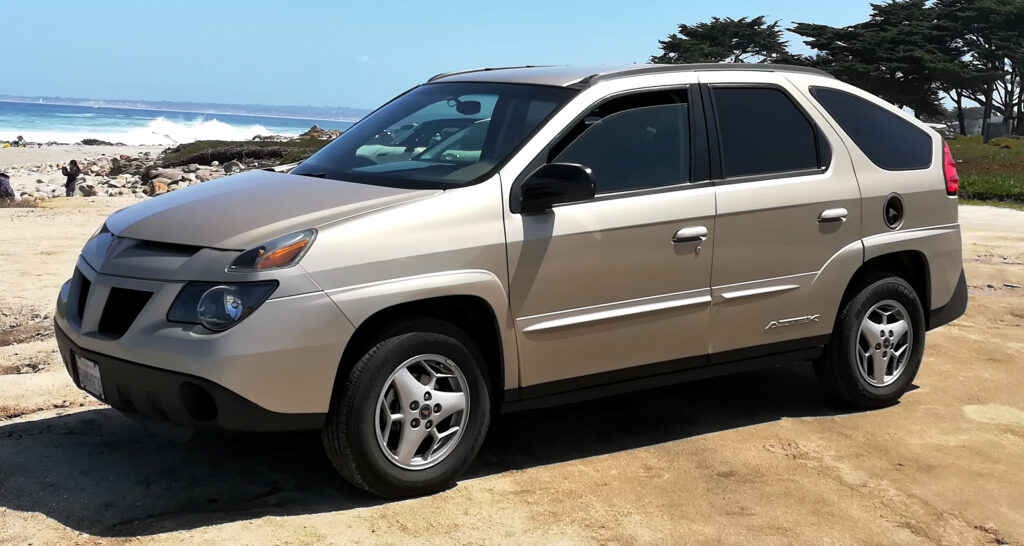
2. **Pontiac Aztek (2001-2005): Ugly, Unloved, and Unsuccessful**
The Pontiac Aztek arrived on the scene with what General Motors intended to be a compelling proposition: an innovative, versatile SUV designed for the adventurous and outdoorsy buyer. It boasted practical features such as ample cargo space, a built-in cooler, and even an optional tent attachment, hinting at a vehicle engineered for utility and active lifestyles. On paper, it had all the ingredients for success, but in reality, it faced an insurmountable hurdle: its divisive aesthetic.
The Aztek’s design was largely considered ungainly and offensive to conventional automotive beauty. Its awkward proportions, oddly placed headlights, and a rear end described as a design afterthought quickly cemented its status as an automotive punchline. Despite its commendable practicality and a marketing push that included prominent placement on the hit show *Survivor*, consumers simply could not overlook its clunky aesthetics, proving that functionality alone cannot always triumph over visual appeal.
Performance-wise, the Aztek offered little to excite the market. Equipped with a standard V6 engine and available in front- or all-wheel drive, its performance was decidedly average—nothing that allowed it to stand out in an increasingly competitive SUV segment. With sluggish sales failing to justify its continued production, Pontiac pulled the plug by 2005, after just a few years on the market. Ironically, the Aztek later gained a cult following due to its notable appearance in *Breaking Bad*, but by then, its commercial fate had long been sealed, making it a powerful example of a design misfire.
Car Model Information: 2005 Pontiac Aztek FWD
Name: Pontiac Aztek
Manufacturer: General Motors
Production: July 2000 – December 2004
Assembly: Ramos Arizpe
Designer: Tom Peters (chief designer: 1997)
Class: Mid-size crossover SUV
BodyStyle: SUV
Platform: GM U platform
Related: Buick Rendezvous
Layout: Front-engine, front-wheel-drive layout
Engine: General Motors 60° V6 engine#LA1,V6
Transmission: GM 4T65-E transmission,Automatic transmission
Wheelbase: 108.3 in (2,751 mm)
Length: 182.1 in (4,625 mm)
Width: 73.7 in (1,872 mm)
Height: 66.7 in (1,694 mm)
Weight: 3,779–4,043 lb (1,714–1,834 kg)
Predecessor: Pontiac Sunrunner
Successor: Pontiac Torrent
ModelYears: 2001–2005
Categories: All-wheel-drive vehicles, All articles needing additional references, All articles with unsourced statements, Articles needing additional references from October 2013, Articles with short description
Summary: The Pontiac Aztek is a mid-size crossover SUV marketed by General Motors introduced in 2000 for the model years 2001 through 2005. As a four-door crossover with front-wheel drive and optional all-wheel drive, the Aztek featured a four-speed automatic transmission with a V6 engine. Marketed by Pontiac as a “sport recreational vehicle,” the Aztek used a shortened platform shared with GM’s minivans (e.g., the Pontiac Montana) featuring 94 cubic feet of cargo room with its rear seats removed. The design employed conventional rear outswing doors rather than sliding doors, and a split rear tailgate, the lower section formed with seat indentations and cupholders. Other features included a front center console that doubled as a removable cooler, optional rear stereo controls in the cargo area, optional sliding cargo floor with grocery compartments, and optional camping package with an attachable tent and air mattress.
Get more information about: Pontiac Aztek
Buying a high-performing used car >>>
Brand: Pontiac Model: Aztek
Price: $3,800 Mileage: 125,965 mi.

3. **DeLorean DMC-12 (1981-1983): Unreliable Icon of Pop Culture**DMC-12 was, by many metrics, an automotive disaster, despite its futuristic appearance.
The DeLorean DMC-12 holds a unique place in automotive lore, largely thanks to its starring role as a time machine in the *Back to the Future* film franchise. This association has cemented its status as one of the most recognizable cars in history. However, its cinematic glory sharply contrasts with its real-world performance; in reality, the DMC-12 was, by many metrics, an automotive disaster, despite its futuristic appearance.
Conceived with audacious plans by John DeLorean, the car’s distinctive stainless steel body panels and iconic gull-wing doors promised a glimpse into the future of automotive design. Yet, beneath this striking exterior lay a multitude of flaws. The vehicle was plagued by notoriously poor build quality, underwhelming performance that belied its sports car aspirations, and an engine that proved frustratingly unreliable. Production delays and significant cost overruns meant that when the DMC-12 finally reached the market, it was not only overpriced but also severely underpowered for its segment.
Its Peugeot-Renault-Volvo V6 engine, producing a mere 130 horsepower, rendered the car sluggish compared to its contemporary rivals, failing to deliver the spirited driving experience expected of a vehicle with such a dramatic aesthetic. Compounding these issues were critical quality control problems that led to frequent mechanical failures, further eroding consumer confidence. The DeLorean Motor Company soon found itself in dire financial straits, a situation exacerbated by a highly publicized drug scandal that ultimately sealed the company’s fate. With only around 9,000 units ever built, the company collapsed in 1982, leaving the DMC-12 as a fascinating, albeit flawed, piece of automotive history—a pop culture icon that spectacularly failed as a practical sports car.
Car Model Information: 1981 Delorean DMC-12
Name: DMC DeLorean
Alt: 1983 DeLorean
Caption: 1983 DeLorean
Manufacturer: DeLorean Motor Company
Production: January 21, 1981 – December 1982
ModelYears: 1981–1983
Assembly: Dunmurry
Designer: Giorgetto Giugiaro
Class: Sports car
BodyStyle: coupé
Layout: Rear-engine, rear-wheel-drive layout
Doors: Gull-wing doors
Engine: 2.85 L
Abbr: on
Powerout: 130 hp
Transmission: 5-speed manual ,3-speed automatic
Wheelbase: 2413 mm
Length: 4267 mm
Width: 1988 mm
Height: 1140 mm
Weight: 1233 kg
Sp: us
Categories: 1980s cars, All Wikipedia articles written in American English, Articles with short description, Automobiles with backbone chassis, Automobiles with gull-wing doors
Summary: The DMC DeLorean is a rear-engine, two-seat sports car manufactured and marketed by John DeLorean’s DeLorean Motor Company (DMC) for the American market from 1981 until 1983—ultimately the only car brought to market by the fledgling company. The DeLorean is sometimes referred to by its internal DMC pre-production designation, DMC-12, although this was not used in sales or marketing materials for the production model.
Designed by Giorgetto Giugiaro, the DeLorean is noted for its gull-wing doors and brushed stainless-steel outer body panels, as well as its lack of power and performance. Though its production was short-lived, the DeLorean became widely known after it was featured as the time machine in the Back to the Future films.
With the first production car completed on January 21, 1981, the design incorporated numerous minor revisions to the hood, wheels and interior before production ended in late December 1982, shortly after DMC filed for bankruptcy and after total production reached an estimated 9,000 units.
Despite the car having a reputation for poor build quality and an unsatisfactory driving experience, the DeLorean continues to have a strong following, driven in part by the popularity of Back to the Future. 6,500 DeLoreans were estimated to still be on the road as of 2015.
Get more information about: DMC DeLorean
Buying a high-performing used car >>>
Brand: DeLorean Model: DMC-12
Price: $56,500 Mileage: 0 mi.
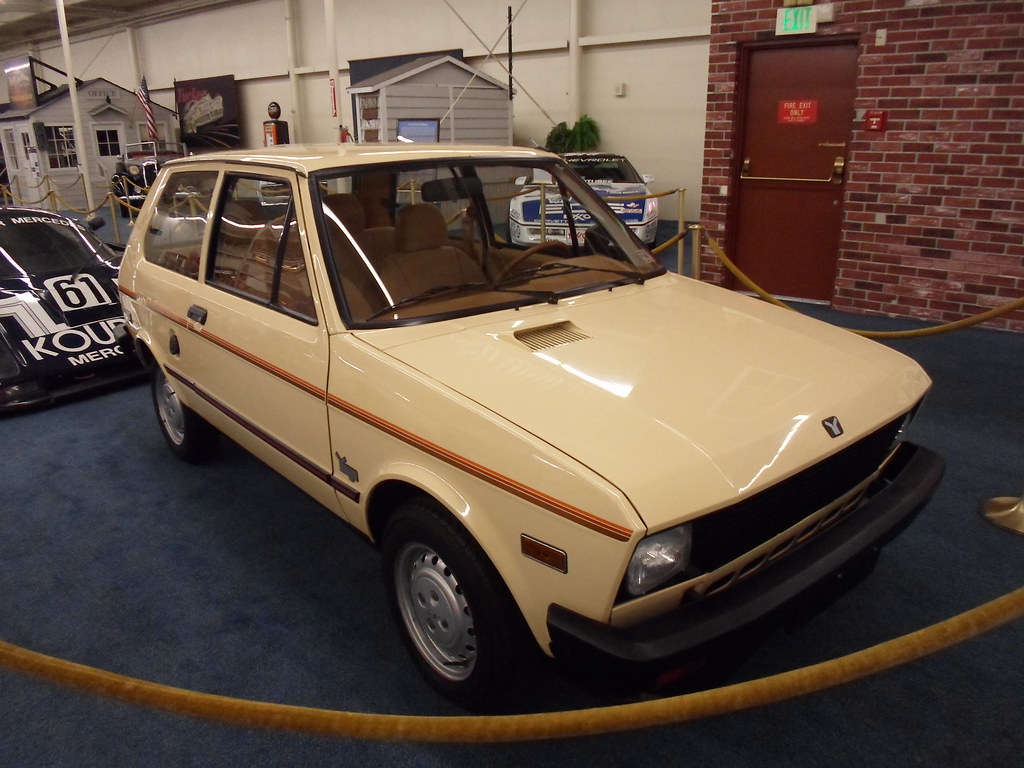
4. **Yugo GV (1985-1992): The Cheapest Car, A Steep Cost**iable, shoddily built, and, alarmingly, downright dangerous.
The Yugo GV carved out its niche in the American market by being marketed as an ultra-affordable, no-frills vehicle specifically targeting budget-conscious buyers. Imported from Yugoslavia in the 1980s, it quickly distinguished itself as one of the cheapest new cars ever sold in the U.S. However, this seemingly attractive low price came with a profoundly steep cost, as the Yugo rapidly earned a reputation for being astonishingly unreliable, shoddily built, and, alarmingly, downright dangerous.
Owners were routinely confronted with a litany of problems, from persistent engine failures and electrical issues to components that seemed to disintegrate with minimal provocation. The car’s foundation, an outdated Fiat-based design, combined with subpar manufacturing practices, resulted in constant breakdowns and a perpetual state of disrepair for many owners. Furthermore, its tiny 55-horsepower engine made highway driving a daunting and risky challenge, barely capable of keeping pace with modern traffic, while fundamental safety concerns only amplified its woes.
Despite an initial burst of sales, driven purely by its rock-bottom price, the Yugo swiftly devolved into a national laughingstock in America. As reports of its pervasive issues spread, consumer confidence plummeted, and with increasingly stringent safety regulations taking hold, the car unceremoniously disappeared from U.S. dealerships by the early 1990s. Today, the Yugo GV is primarily remembered for its notorious reputation rather than any positive attributes, serving as a stark reminder that sometimes, the cheapest option can indeed be the most expensive in the long run.
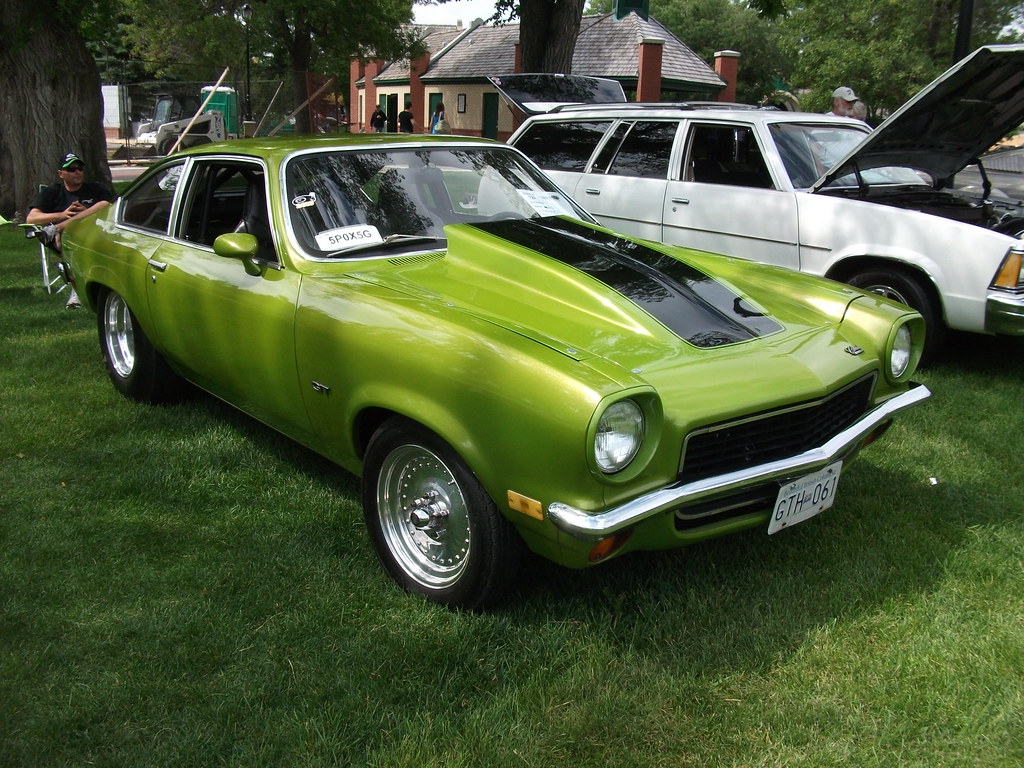
5. **Chevrolet Vega (1971-1977): A Small Car with Big Problems**
The Chevrolet Vega, launched in the early 1970s, debuted with considerable fanfare and high expectations. General Motors envisioned it as a sleek, fuel-efficient compact car that could effectively compete with the rising tide of imported small cars. However, GM’s expedited push to bring the Vega to market resulted in a catastrophic series of quality control issues that quickly tarnished its promising initial appeal. The Vega rapidly gained a notorious reputation for pervasive problems, including excessive rust, persistently overheating engines, and an overall alarming lack of reliability that frustrated countless owners.
One of the most significant engineering blunders lay in its innovative, yet ultimately flawed, aluminum engine block. This component proved acutely prone to warping and catastrophic failure, primarily due to a poorly designed cooling system that was insufficient for the engine’s thermal demands. Owners reported egregious oil consumption issues and premature engine wear, while the car’s body panels were infamous for rusting at an alarming rate, even in climates that were considered relatively mild. This susceptibility to rust severely compromised the vehicle’s structural integrity and aesthetic longevity.
Despite initially strong sales, buoyed by its attractive styling and economic promises, word of the Vega’s myriad problems spread like wildfire, causing consumer trust to plummet precipitously. General Motors made several attempts to rectify the car’s deep-seated flaws through multiple redesigns and engineering revisions, but the damage to its reputation was already irrevocably done. By 1977, the Chevrolet Vega was reluctantly discontinued, leaving behind a legacy as one of the most infamous and problematic automotive failures in General Motors’ storied history, a stark reminder of the perils of prioritizing speed over thoroughness in vehicle development.
Car Model Information: 1976 Chevrolet Vega
Name: Chevrolet Vega
Caption: 1971 Chevrolet Vega
Aka: Vega 2300
Manufacturer: Chevrolet
Production: 1970–1977
ModelYears: 1971–1977
Assembly: Lordstown, Ohio
Predecessor: Chevrolet Corvair
Successor: Chevrolet Monza
Class: Subcompact car
BodyStyle: notchback,hatchback,station wagon,Panel van
Layout: FR layout
Platform: GM H platform (RWD)
Engine: {{cvt,2.3,L,cuin,0,Chevrolet 2300 engine
Transmission: manual transmission,4-speed manual,overdrive (mechanics),Torque-Drive 2-speed Powerglide requiring manual shifting,Powerglide,Turbo-Hydramatic
Wheelbase: cvt
Length: cvt
Width: cvt
Height: cvt
Weight: cvt
Related: Pontiac Astre,Chevrolet Monza,Pontiac Sunbird#First generation (1976–1980),Buick Skyhawk#First generation (1975–1980),Oldsmobile Starfire#Second generation (1975–1980)
Designer: Bill Mitchell (designer)
Categories: 1970s cars, All articles needing additional references, All articles with unsourced statements, Articles needing additional references from July 2023, Articles with short description
Summary: The Chevrolet Vega is a subcompact automobile manufactured and marketed by GM’s Chevrolet division from 1970 until 1977. Available in two-door hatchback, notchback, wagon, and sedan delivery body styles, all models were powered by an inline four-cylinder engine designed specifically for the Vega, with a lightweight aluminum alloy cylinder block. The Vega first went on sale in Chevrolet dealerships on September 10, 1970. Variants included the Cosworth Vega, a short-lived limited-production performance version introduced spring 1975.
The Vega received the 1971 Motor Trend Car of the Year. Subsequently, the car became widely known for a range of problems related to its engineering, reliability, safety, propensity to rust, and engine durability. Despite numerous recalls and design upgrades, Vega’s problems tarnished its reputation and that of General Motors. Production ended with the 1977 model year.
The car was named for Vega, the brightest star in the constellation Lyra.
Get more information about: Chevrolet Vega
Buying a high-performing used car >>>
Brand: Chevrolet Model: Vega
Price: $30,000 Mileage: 82,344 mi.
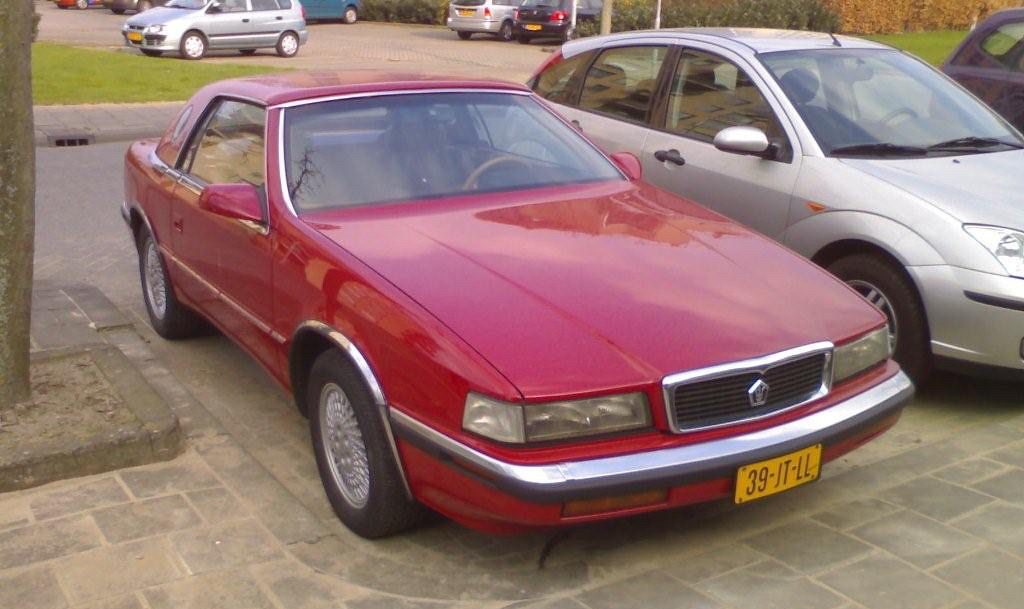
6. **Chrysler TC by Maserati (1989-1991): A Luxury Flop**
The Chrysler TC by Maserati represented an ambitious, if ultimately misguided, venture: a luxury roadster conceived from a transatlantic collaboration aiming to blend American practicality with Italian craftsmanship. On paper, the idea of such a prestigious partnership seemed compelling, promising a high-end personal luxury vehicle with exotic flair. However, the reality of the TC by Maserati was far less impressive and ultimately proved to be a significant misstep for Chrysler.
A primary factor undermining its luxury aspirations was the car’s striking resemblance and shared componentry with the much cheaper Chrysler LeBaron. This fundamental issue made its lofty price tag—a premium ostensibly justified by the Maserati branding—exceptionally difficult for discerning buyers to rationalize. The perception of merely being an overpriced LeBaron with a fancy badge severely diminished its exclusive appeal and credibility in the luxury segment.
Furthermore, the vehicle’s performance proved to be another substantial letdown. While a special turbocharged engine was offered in limited quantities, most models were equipped with underwhelming powertrains that simply failed to deliver the exhilarating driving experience expected of a true luxury or sports car carrying the Maserati name. Compounding these performance deficiencies were persistent quality control issues and inconsistent build quality, which further frustrated buyers expecting Italian precision. To exacerbate its challenges, Chrysler’s protracted development cycle meant the TC arrived on the market just as consumer interest in personal luxury coupes was already on a noticeable decline. With weak sales figures and a decided lack of enthusiasm from the buying public, the Chrysler TC by Maserati was quietly discontinued after a mere few years, firmly cementing its place as a costly and instructive automotive misstep.
Car Model Information: 2025 Acura RDX Base
Name: Chrysler TC by Maserati
Manufacturer: Maserati,Chrysler (division)
Production: 1988–1990
ModelYears: 1989–1991
Class: Grand tourer
Layout: Front-engine, front-wheel-drive layout
Predecessor: Imperial (automobile)#Sixth generation (1981–1983)
Successor: Chrysler Crossfire
Platform: Chrysler Q platform
BodyStyle: convertible
Engine: Chrysler 2.2 & 2.5 engine#Turbo II,Chrysler 2.2 & 2.5 engine#TC,Mitsubishi 6G7 engine#6G72
Transmission: manual transmission,TorqueFlite,Ultradrive
Weight: 3033 lb
Abbr: on
Wheelbase: 93.3 in
Length: 175.8 in
Width: 68.5 in
Height: 51.9 in
Assembly: Torino,Sparone,Milan
Categories: 1990s cars, All articles with unsourced statements, Articles with short description, Articles with unsourced statements from August 2025, Articles with unsourced statements from March 2021
Summary: The Chrysler TC by Maserati is a two-passenger, two-door convertible jointly developed by Chrysler and Maserati. Introduced at the 1986 Los Angeles Auto Show., the TC was positioned as a grand tourer using a “Q” body on a modified second-generation Chrysler K platform. After two years of development delays, the TC became available in late-1988 and a total of 7,300 units (the minimum required under the contract) were manufactured in Milan, Italy, through 1990. All cars sold as 1991 models were manufactured in 1990.
Get more information about: Chrysler TC by Maserati
Buying a high-performing used car >>>
Brand: Chrysler Model: TC by Maserati
Price: $42,564 Mileage: 4,198 mi.
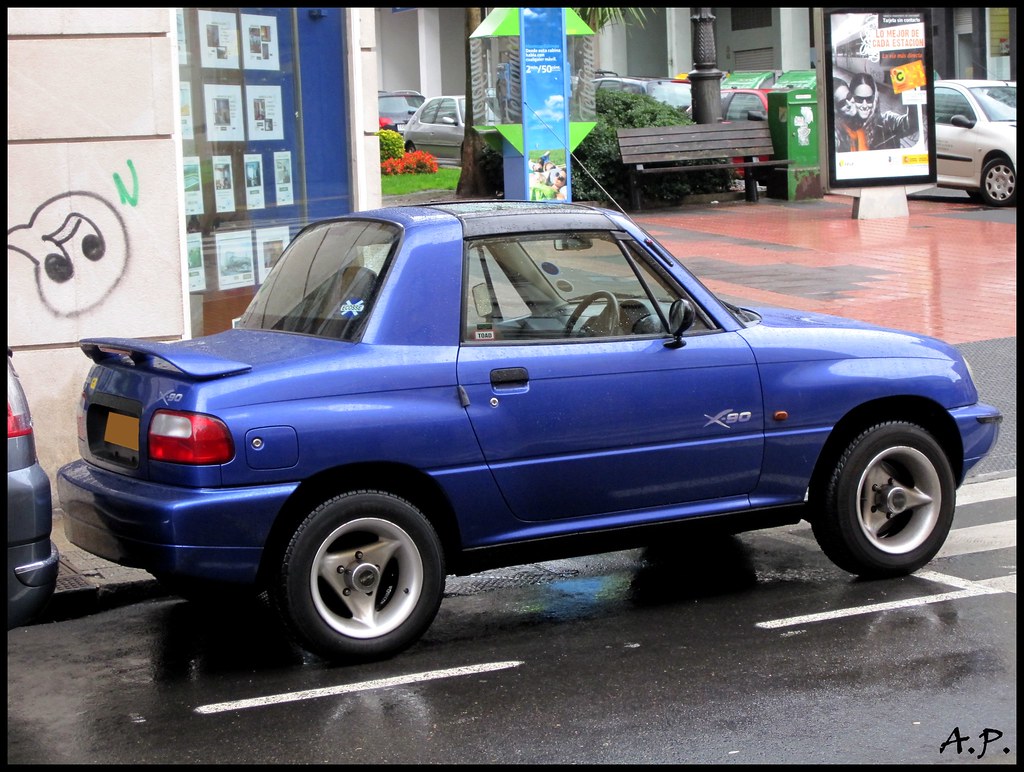
7. **Suzuki X-90 (1996-1998): The Quirky Misfit**
The Suzuki X-90 undeniably holds a place among the most uniquely bizarre vehicles ever introduced. Conceived as a two-seater SUV with removable T-tops and a distinctly cartoonish aesthetic, it embodied an unconventional vision that ultimately failed to resonate with the wider automotive public. Suzuki aimed to position it as a fun, sporty alternative, yet its unusual proportions and design often led it to be perceived more as a novelty toy than a serious contender in any segment.
Beneath its quirky exterior, the X-90’s performance capabilities were equally underwhelming. Powered by a modest 1.6-liter engine, it mustered a mere 95 horsepower. This rendered the X-90 notably sluggish on the road, particularly when attempting confident acceleration or maintaining speed. It fell far short of any “sporty” driving dynamics it might have aspired to, further exacerbating its identity crisis by failing to deliver a spirited experience.
From a practical standpoint, the X-90 was riddled with compromises. Its two-seater configuration severely limited passenger capacity, while awkward dimensions and restricted cargo space made it ill-suited for both urban errands and adventurous excursions. Owners often reported a cramped interior and a stiff, unforgiving ride, transforming longer journeys into a chore. These practical shortcomings, combined with its polarizing design and lackluster performance, steered most consumers toward more capable and conventional SUV offerings.
With consistently sluggish sales and a clear lack of consumer demand, Suzuki swiftly acknowledged the X-90’s commercial struggles. Production halted after just a couple of years, firmly cementing its legacy as a forgotten oddity of the 1990s. It stands as a bold, albeit commercially disastrous, experiment that underscored the risks of venturing too far outside established market preferences.
Car Model Information: 1996 Suzuki X-90 4WD
Name: Suzuki X-90
Manufacturer: Suzuki
Aka: Suzuki Vitara X-90 (Europe)
Production: 1995–1997
Assembly: Iwata, Shizuoka
Class: Subcompact car
BodyStyle: coupe
Layout: Front-engine, rear-wheel-drive layout,Front-engine, four-wheel-drive layout
Chassis: Body-on-frame
Engine: SOHC,Suzuki G engine#G16A
Transmission: Automatic transmission,Manual transmission
Wheelbase: 2200 mm
Abbr: on
Length: 3710 mm
Width: 1695 mm
Height: 1550 mm
Weight: 1100 kg
Related: Suzuki Vitara
Predecessor: Suzuki Jimny#Second generation (1981)
Categories: All-wheel-drive vehicles, All articles with unsourced statements, Articles with short description, Articles with unsourced statements from August 2018, Cars introduced in 1995
Summary: The Suzuki X-90 is a front engine, rear or four wheel drive, two door, two seater car manufactured and marketed by Suzuki for the model years 1995-1997. Derived from the Suzuki Vitara, the X-90 featured a T Section removable roof. Replacing the Samurai in the market in the United States, Suzuki began marketing the X-90 in Japan by the end of 1995, and in western markets in April 1996.
Get more information about: Suzuki X-90
Buying a high-performing used car >>>
Brand: Suzuki Model: X-90
Price: $5,000 Mileage: 146,943 mi.
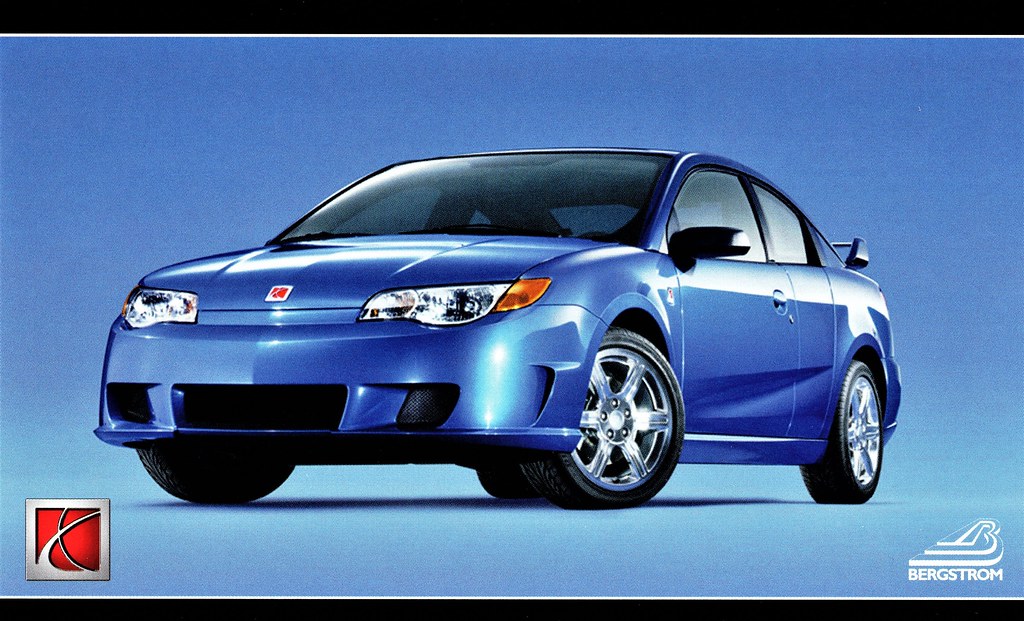
8. **Saturn Ion (2003-2007): A Tarnished Legacy**
The Saturn Ion launched with the ambitious goal of invigorating the brand, succeeding the popular S-Series. However, instead of building on its predecessor’s goodwill, the Ion quickly became one of General Motors’ more significant missteps. It failed to capture the enthusiasm and loyalty Saturn owners had previously demonstrated, aiming to be a fresh face but delivering an execution that left much to be desired from the outset.
One of the most persistent criticisms revolved around its build quality and interior design. The cabin was dominated by cheap plastics, and its unique center-mounted instrument cluster often felt awkward and counter-intuitive. Seats were widely regarded as uncomfortable, diminishing appeal even for short commutes. This compromised interior, coupled with subpar materials, made the Ion feel dated and unrefined almost immediately, failing to meet contemporary expectations for compact car comfort and ergonomics.
Beyond aesthetics and interior comfort, the Ion’s driving dynamics were equally problematic. Its electric power steering often felt vague and disconnected, providing little tactile feedback, detracting significantly from the driving experience. The ride quality was also frequently described as harsh and unrefined, struggling to absorb road imperfections. While Saturn did attempt to inject excitement with a supercharged Red Line model, these efforts proved insufficient to overcome the vehicle’s fundamental design and engineering shortcomings.
Ultimately, the Saturn Ion’s fate was sealed not only by its perceived mediocrity but by a critical safety defect. The infamous ignition switch flaw, which could inadvertently switch off the engine and disable airbags, led to widespread recalls and numerous lawsuits. This profound lapse irrevocably tarnished the Ion’s reputation and further eroded consumer confidence. Consequently, with sluggish sales and a public image deeply scarred, the Ion was discontinued in 2007, ushering in the short-lived Saturn Astra before the entire Saturn brand was eventually wound down.
Car Model Information: 2006 Saturn Ion 2
Name: Saturn Ion
Caption: 2005–07 Ion (facelift)
Manufacturer: Saturn Corporation
Production: 2002–March 29, 2007
ModelYears: 2003–2007
Assembly: Spring Hill, Tennessee
Class: Compact car
BodyStyle: sedan (automobile)
Platform: GM Delta platform
Related: Chevrolet Cobalt,Chevrolet HHR,Pontiac G5,Opel Astra
Layout: Front-engine, front-wheel-drive layout
Engine: Liter,GM Ecotec engine#L61,Straight-four engine
Transmission: Getrag,Getrag F23 transmission
Wheelbase: 103.2 in
Abbr: on (Red Line)
Length: 184.5 in
Width: 67.2 in
Height: 57.4 in
Weight: convert
Predecessor: Saturn S-Series
Successor: Saturn Astra
Categories: Articles with short description, Cars discontinued in 2007, Cars introduced in 2002, Commons category link is on Wikidata, Compact cars
Summary: The Saturn Ion is a compact car sold by Saturn between the 2003 and 2007 model years. Based on the GM Delta platform, the Ion replaced the Saturn S-Series in 2002,
and was replaced by the new Saturn Astra (Opel Astra) in 2008. Production of the Ion ended on March 29, 2007. The Ion was the last Saturn passenger car built at the Spring Hill, Tennessee, plant which was originally linked to the company’s branding, with Saturn owners attending “homecoming” events at the plant.
Get more information about: Saturn Ion
Buying a high-performing used car >>>
Brand: Saturn Model: Ion
Price: Not Priced Mileage: 131,216 mi.
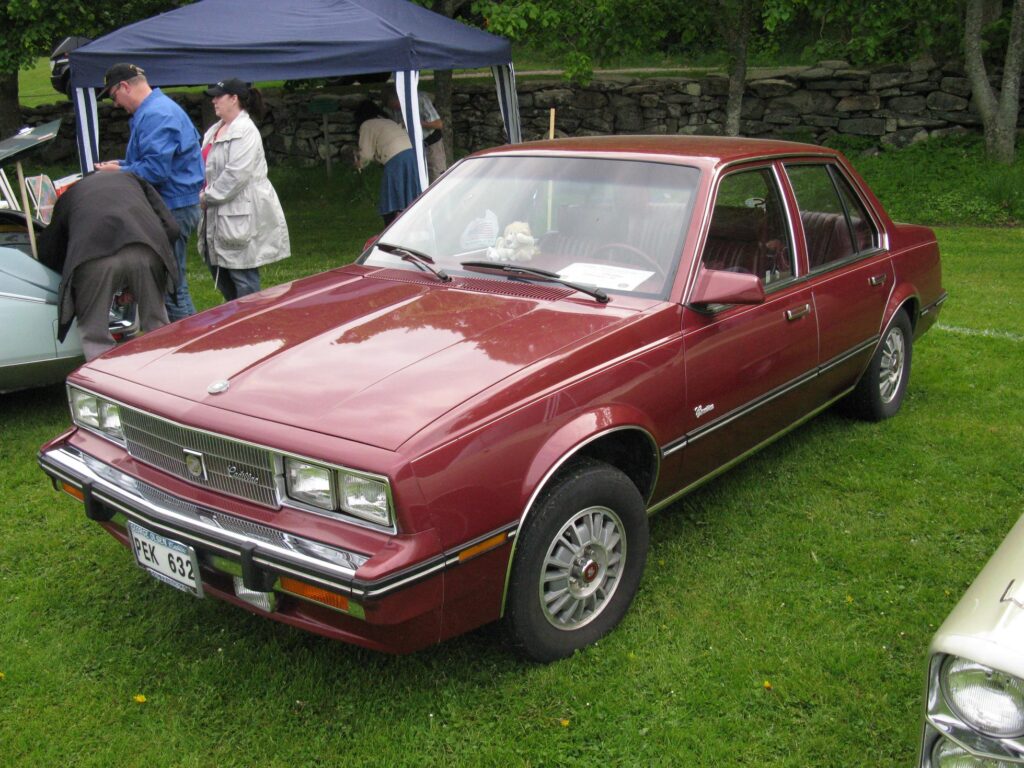
9. **Cadillac Cimarron (1982-1988): The Apex of Badge Engineering Blunders**
The Cadillac Cimarron holds a notorious position in automotive history, widely cited as one of the most egregious missteps ever made by the venerable Cadillac brand. Introduced in the early 1980s, its ostensible purpose was to enable Cadillac to compete with the burgeoning popularity of European luxury compacts from marques like BMW and Mercedes-Benz. Yet, what materialized was not a true competitor, but rather a cautionary and deeply embarrassing tale of ill-conceived badge engineering.
At its core, the Cimarron was a thinly disguised Chevrolet Cavalier, a mass-market compact, differentiated primarily by a Cadillac badge, some slightly upgraded interior trim like leather seats, and a heftier price tag. Discerning luxury buyers, accustomed to Cadillac’s distinctive engineering and opulent appointments, were not fooled by this superficial transformation. The fundamental lack of genuine Cadillac refinement and distinction beneath the veneer immediately undermined its credibility and left it vulnerable to scathing criticism.
The performance offered by the Cimarron was another significant letdown, further eroding its luxury aspirations. The base four-cylinder engine was chronically underpowered, delivering an uninspiring and anemic driving experience utterly out of character for a brand synonymous with powerful engines and effortless cruising. Even subsequent attempts by Cadillac to enhance the car with a V6 engine and additional features could not overcome the initial, indelible impression of it being an overpriced, under-engineered compact wearing a luxury mask.
Unsurprisingly, sales for the Cimarron were dismal from its inception, failing to capture the target demographic or appeal to traditional Cadillac clientele. By the time it was discontinued in 1988, the Cimarron had not only failed to achieve its strategic goals but had also inflicted significant damage on Cadillac’s esteemed reputation. It stands as a stark and enduring lesson in the perils of brand dilution and the critical importance of maintaining distinct identity and delivering genuine value in the luxury automotive segment.
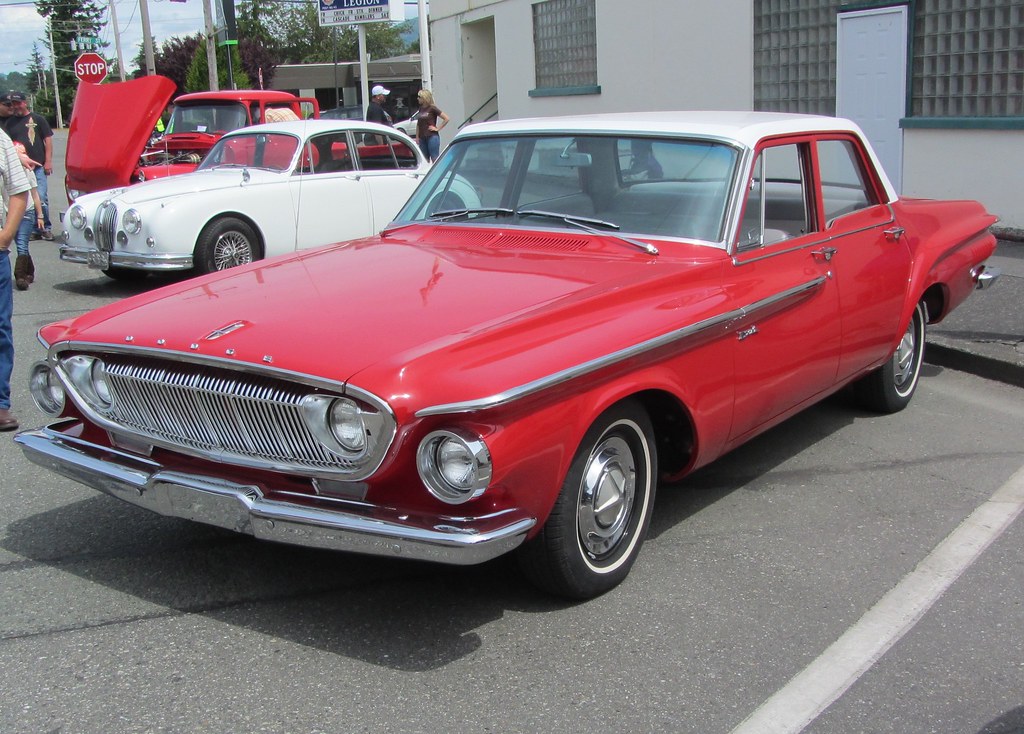
10. **Dodge Dart (2013-2016): A Comeback That Missed the Mark**
The revival of the Dodge Dart nameplate in 2013 was initially met with a degree of optimism. It promised to inject new life into Dodge’s compact car offerings, aiming to compete in a fiercely contested segment dominated by established players like the Honda Civic and Toyota Corolla, while also challenging the Ford Focus. With modern styling, the Dart looked promising on paper, but its real-world execution ultimately fell short, leading to a disappointingly brief run.
A fundamental weakness lay in its powertrain options. The base 2.0-liter and 1.4-liter turbocharged engines, despite specifications, often felt notably sluggish and underpowered, particularly when drivers sought confident acceleration or merging onto highways. Even the larger 2.4-liter engine struggled to deliver an engaging or spirited driving experience. This deficiency was compounded by an often unrefined transmission, further detracting from the car’s overall driving dynamics and leaving many drivers feeling disengaged.
Inside, the Dart made an effort to incorporate modern technology for its era, including a reasonably sized touchscreen. However, the cabin design and material quality quickly felt outdated against more sophisticated rivals. Adding to its woes were persistent reports of reliability issues and inconsistent build quality, undermining consumer confidence. Furthermore, a critical omission was the lack of an all-wheel-drive option, increasingly offered by competitors like Subaru, which limited its appeal in certain markets.
Facing formidable competition from well-established and highly refined compacts, the Dodge Dart struggled immensely to carve out a viable niche. Sales remained consistently low, failing to justify continued production. Ultimately, Fiat-Chrysler discontinued the Dart in 2016, marking it as another failed attempt to gain a significant foothold in the compact car market. Its brief tenure serves as a vivid reminder that merely resurrecting a classic name is insufficient; a vehicle must deliver compelling performance, reliability, and value.
Car Model Information: 2015 Dodge Dart SXT
Name: Dodge Dart
Caption: 1966 Dodge Dart GT 2-door hardtop
Manufacturer: Dodge
Production: 1959–1976 (US market)
ModelYears: 1960–1976 (US market)
Class: Full-size
Layout: FR layout
Predecessor: Dodge Coronet#Fourth generation (1957–1959)
Related: Plymouth Valiant,Chrysler Valiant,Dodge Phoenix
Successor: Dodge Aspen,Dodge Diplomat,Talbot Tagora
Categories: 1970s cars, All articles with unsourced statements, Articles with short description, Articles with unsourced statements from December 2023, Articles with unsourced statements from May 2025
Summary: The Dodge Dart is a line of passenger cars produced by Dodge from the 1959 to 1976 model years in North America, with production extended to later years in various other markets.
The production Dodge Dart was introduced as a lower-priced full-size model in 1960 and 1961, but became a mid-size car for one model year for 1962, and was then reduced to a compact for two generations, from 1963 to 1976.
Chrysler had first used ‘Dart’ name plates on two Italian styled show cars, in 1956 and 1957, before it became a Dodge model name. The Dart nameplate was resurrected for a Fiat-derived compact car that was introduced in 2012.
Get more information about: Dodge Dart
Buying a high-performing used car >>>
Brand: Dodge Model: Dart
Price: $9,995 Mileage: 143,082 mi.
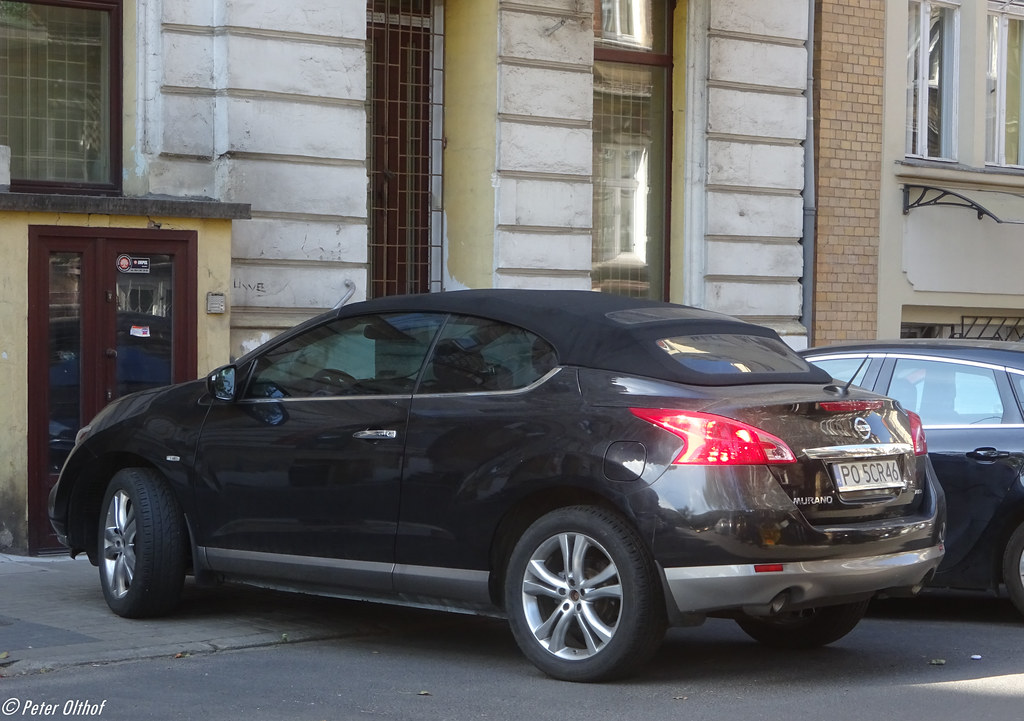
11. **Nissan Murano CrossCabriolet (2011-2014): The Ill-Conceived Crossover**
The Nissan Murano CrossCabriolet stands as one of the most polarizing and perplexing automotive experiments of the modern era. Its concept was audacious: to fuse the practicality and elevated driving position of an SUV with the open-air freedom of a convertible. While such a combination might have seemed unique on paper, the real-world execution resulted in a vehicle that was, by most accounts, an undeniable commercial and aesthetic disaster.
The most immediate and striking issue was its fundamentally awkward proportions. Transforming the Murano’s substantial SUV chassis into a two-door convertible yielded a design that appeared bloated, unbalanced, and visually ungainly. The removal of rear doors significantly compromised passenger access to the rear seats, turning convenience into a cumbersome affair. Furthermore, the convertible mechanism and roof storage severely impinged upon cargo space, eroding a primary benefit of an SUV.
Compounding its design and practicality flaws was its prohibitive price tag. With an MSRP around $45,000, the CrossCabriolet was positioned squarely in the territory of genuine luxury SUVs, which offered superior styling, more comprehensive features, and significantly greater appeal. Buyers found little justification for investing such a sum in a vehicle that was neither a particularly good SUV nor an especially compelling convertible. The driving experience, while competent, did nothing to elevate it above its shortcomings.
Unsurprisingly, sales figures were consistently abysmal throughout its short production run. Consumers largely shied away from its unconventional and compromised nature. Nissan quietly discontinued the model after just a few years, allowing it to fade into obscurity as a prime example of a niche market experiment gone profoundly off course. It serves as a stark testament that sometimes, blending disparate automotive categories can lead to a Frankenstein’s monster rather than a versatile hybrid.
Car Model Information: 2025 Acura RDX Base
Name: Nissan Murano
Manufacturer: Nissan
Production: 2002–present
ModelYears: 2003–present
Class: Mid-size crossover SUV
Layout: Front-engine, front-wheel-drive layout
Predecessor: Nissan R’nessa
Successor: Nissan Pathfinder#Pathfinder Concept (2023, China)
Caption: 2024 Nissan Murano (Z52)
Categories: 2010s cars, 2020s cars, All-wheel-drive vehicles, All Wikipedia articles written in American English, All articles with dead external links
Summary: The Nissan Murano (Japanese: 日産・ムラーノ, Hepburn: Nissan Murāno) is a mid-size crossover SUV manufactured and marketed by Nissan since May 2002 for the 2003 model year. The fourth generation was revealed in October 2024.
As Nissan’s first crossover SUV for the United States and Canada, the Murano was designed at Nissan America in La Jolla, California, and was based on the Nissan FF-L platform shared with the third generation Altima. The European version of the Murano began sales in 2004.
The Murano was Nissan’s only crossover SUV in the United States until September 2007, when the Rogue went on sale. In Canada, the X-Trail had been on sale as Nissan’s second car based SUV since 2004 as a model for 2005; it was replaced by the 2008 Rogue at the end of 2007. The Murano is sized between the Pathfinder and the discontinued Xterra (which was replaced by the Rogue as a compact SUV). For the model years of 2011 to 2014, a convertible variant, the Murano CrossCabriolet, was available for the second-generation model. As of 2018, the Murano is sized between the X-Trail and the larger Pathfinder.
The nameplate Murano derives from the Italian islands of Murano and the namesake Murano art glass for which the islands are widely known.
Get more information about: Nissan Murano
Buying a high-performing used car >>>
Brand: Nissan Model: Murano CrossCabriolet
Price: $42,564 Mileage: 4,198 mi.

12. **Hummer H2 (2002-2009): The Goliath That Fell From Grace**
The Hummer H2, born from the military-derived Humvee, was undeniably designed to command attention and project an image of unparalleled ruggedness and dominance. From its launch in 2002, it presented an imposing, almost monolithic, presence on the road. However, the very statement it sought to make—one of unyielding power and size—quickly transformed into a liability as public sentiment and economic realities shifted dramatically, revealing the vehicle’s profound impracticalities.
The H2’s gargantuan dimensions, while contributing to its formidable appearance, made it notoriously unwieldy in everyday driving scenarios. Navigating crowded city streets, maneuvering through tight parking lots, and even fitting into standard garages became significant challenges. This inherent lack of urban practicality, coupled with its immense weight and design, directly translated into an insatiable thirst for fuel. Its abysmal fuel economy became a critical point of contention, particularly as gasoline prices began their precipitous climb during the mid-2000s, making ownership an increasingly expensive proposition.
Beyond its sheer scale and fuel consumption, the H2, despite its rugged exterior, was often criticized for not fully living up to the legendary off-road capabilities of its military predecessor. While capable, its civilian modifications and luxury appointments added weight without always enhancing its core utility for serious off-roading. Furthermore, the interior, while spacious, frequently drew criticism for its quality of materials and design, often feeling less refined than its premium price tag might suggest, failing to deliver the expected luxury experience.
As economic pressures mounted and environmental concerns gained prominence, the sheer excess embodied by the Hummer H2 became increasingly untenable. The market shifted decisively towards more fuel-efficient, practical, and environmentally conscious vehicles. Demand plummeted, and General Motors, facing financial crises and a changing automotive landscape, made the inevitable decision to discontinue the Hummer brand entirely. The H2’s demise in 2009 thus marked the end of an era, symbolizing the rejection of unchecked automotive extravagance in favor of more pragmatic solutions.
Car Model Information: 2003 Hummer H2 Base
Name: Hummer H2
Manufacturer: AM General
Production: 2002–2009
ModelYears: 2003–2009
Assembly: Mishawaka, Indiana,Kaliningrad,designer = Clay Dean (2000)
Class: Full-size SUV
BodyStyle: Sports utility vehicle,pickup truck
Platform: GMT800
Related: Chevrolet Silverado,Chevrolet Avalanche,Chevrolet Tahoe,Chevrolet Suburban,Cadillac Escalade
Layout: Front-engine, four-wheel-drive layout,four-wheel drive
Engine: General Motors LS-based small-block engine#LQ4
Transmission: 4L60E,4-speed 4L65E automatic (2005–2007),automatic transmission
Wheelbase: 122.8 in
Abbr: on – 6.2 L
Length: 203.5 in
Width: 81.3 in
Height: 2002–03: {{convert,77.8,in,mm,0,abbr=on
Weight: {{convert,6400,lb,kg,0,abbr=on
Categories: 2000s cars, AM General vehicles, All-wheel-drive vehicles, All articles needing additional references, Articles needing additional references from January 2024
Summary: The Hummer H2 is a full-size off-road SUV that was marketed by Hummer and built in the AM General facility under contract from General Motors from 2002 until 2009. It is based on a modified GMT820 GM three-quarter-ton pickup truck in the front and a half-ton 1500 frame in the rear. A four-door pickup truck version with a midgate that opens the vehicle’s interior to the external cargo bed was introduced for the 2005 model year as the H2 SUT (sport utility truck).
Get more information about: Hummer H2
Buying a high-performing used car >>>
Brand: Hummer Model: H2
Price: $12,490 Mileage: 152,679 mi.
These twelve vehicles, from the Edsel’s marketing blunders to the Hummer H2’s excessive scale, serve as poignant reminders that even in an industry driven by innovation and bold ambition, success is never guaranteed. Each failure offers invaluable lessons—whether about the perils of poor design, flawed engineering, misjudged market demand, or the critical importance of prioritizing safety and practicality. For every groundbreaking innovation that propels the automotive world forward, there’s a cautionary tale of a model that simply couldn’t withstand the pressures of the market or the test of time. As automakers continue to push boundaries, these “nightmares” remain etched in history, guiding future designs and reminding us that true automotive excellence is a delicate balance of vision, execution, and understanding what drivers truly need and desire.

